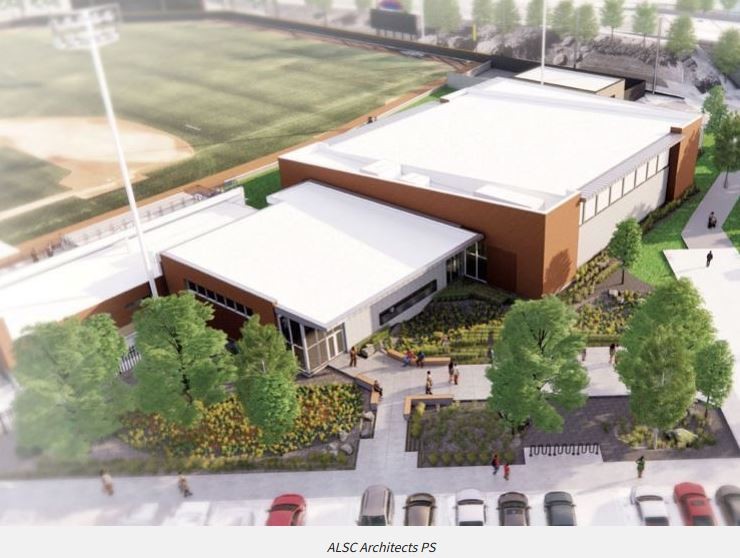Gonzaga's Baseball complex nearing completion
Wednesday, March 27, 2024

Gonzaga University’s $10 million expansion of Patterson Baseball Complex is nearing completion. The complex will have over 35,000 square feet of space for a new locker room, indoor practice facility, and a recruiting gallery. Spokane-based Garco Construction Inc. is the contractor, the Spokane office of DCI Engineers is the project engineer, and Spokane-based ALSC Architects PS is the architect.
-----------------
(As reported by Erica Bullock in the Spokane Journal of Business in May 2023)
Gonzaga University is preparing to expand the Patterson Baseball Complex this year, with a $10 million project that will include a new locker room, an indoor practice facility, and recruiting gallery, says associate athletic director Rob Kavon.
“Our biggest challenge as a baseball program is to have the ability for our athletes to train and get better and compete at that high level during the winter months,” Kavon says.
Upgrades for the complex, located at the northwest corner of Spokane Falls Boulevard and Cincinnati Street on the south end of the campus, are needed to help keep Gonzaga’s baseball team competitive with access to year-round practice space, he says.
The team’s pitchers currently use athletic facility space for training that is shared with other Gonzaga teams. Kavon says that can sometimes make accommodating student schedules a challenge.
“They can’t get in and use it whenever they need to,” explains Kavon. “We’re utilizing some batting cages over at (The Warehouse Athletic Facility) across the street, but we can’t use them all the time because they’re utilized by everybody else.”
Patterson Baseball Complex currently has 19,700 square feet of space that houses a small locker room, lounge, training room, and laundry facility, in addition to locker rooms for visiting teams and officials, according to Gonzaga’s website.
The proposed new locker room is nearly 4,000 square feet, permit information under plan review by the city of Spokane shows, and the training facility will have 11,500 square feet of new space.
After renovations, the complex will have over 35,000 square feet of space.
Outdoors, Gonzaga’s baseball team has access to two batting cages and two pitching mounds. The improvements will provide a total of four indoor batting cages and two indoor pitching mounds.
Kavon says that part of the practice facility will house a recruiting gallery to “tell the story of Gonzaga baseball.”
He says the gallery will be a visual display of the team’s history and accomplishments in addition to its new gear and uniforms.
“Baseball is such a gear-driven sport, and that’s what the student athletes are looking for,” he explains. “It’s usually flashy, and that’s what the new student athletes want to see.”
Seating capacity at Patterson Baseball Complex will be reduced to about 1,500 from 2,000 to accommodate the construction of the new training facility along the first base line, says Kavon. He adds that the lost seating is berm seating—also known as grass seating.
Baseball was introduced at Gonzaga nearly 120 years ago on a field now occupied by the McCarthey Athletic Center, which was constructed in the early 2000s. The team finished its season of home games at Spokane Falls Community College, then played at Avista Stadium until the Patterson Baseball Complex opened in 2007.
Gonzaga replaced the original scoreboard at Patterson with a video board in 2018. Artificial grass was installed earlier this year to improve cold-weather field usability, he says.
“The turf was completed in January,” says Kavon.
The university expects to receive permit approval and begin construction on the planned updates by mid-June, he says.
“It needs to be finished by mid-January,” he says. “The season actually starts in February.”
He says that expansion plans should make the facilities more attractive for recruiting.
“Our coaches are working against all these other schools competing for recruits trying to get the best possible team out there, and one of the biggest hindrances that we’ve had is that we just don’t have an indoor practice facility that our team can utilize,” Kavon says.